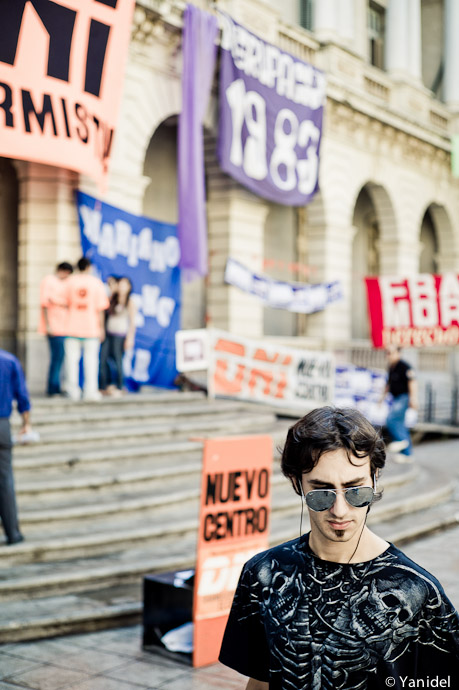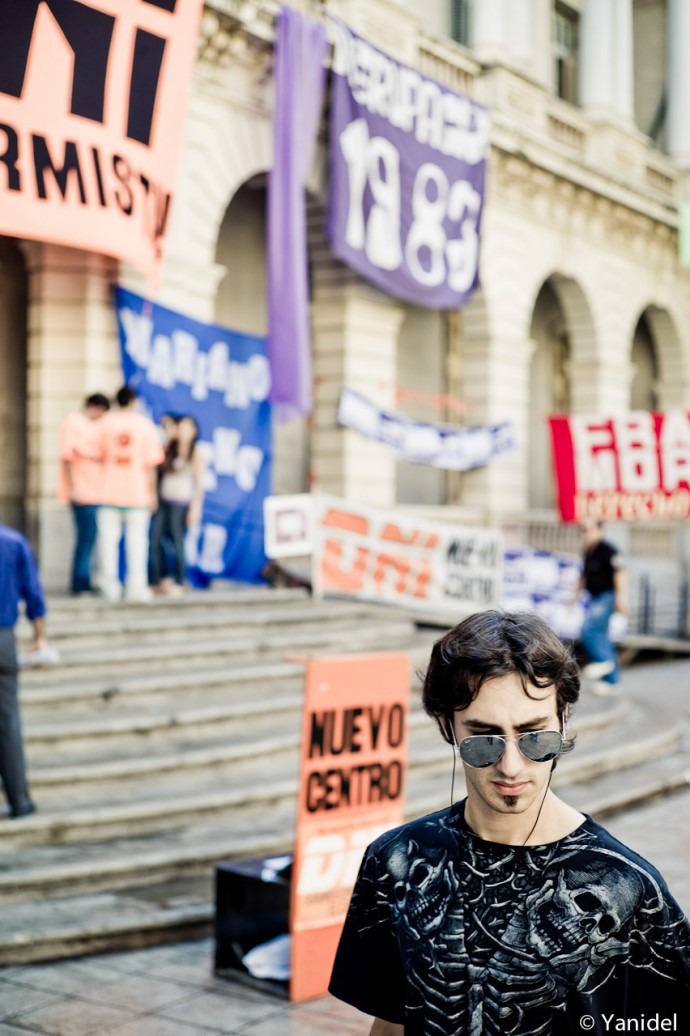When assessing a lens or camera performance, sharpness often tops the list in the buying criteria of photographers. Yet is sharpness actually all that important ? To answer that question, let’s have a look at the same shot resized in several formats (taken in front of the Law Faculty in Rosario).
I) This size corresponds to a medium size web thumbnail. At that size, it is difficult to assess the sharpness of the main subject. Nevertheless, the drawings on his shirt and his glasses can be clearly distinguished.
II) Let’s now look at a large size web image. The subjet clearly stands out from the background. Sharpness is as good as it needs to be.
III) The following format is a 4 x 6 (10cm x 15cm) print which is the most commonly printed size. Here again, sharpness is excellent. Note that it corresponds to the size of the pictures that I publish in the articles of this website. Indeed larger sizes will be difficult to view entirely on computers with smaller screens.
IV) A size which represents roughly the 6 x 9 print size (15cm x 23cm). Very few people will ever print at this size and you’ll need large screens to view the picture entirely. This is the amplification you get when enlarging my pictures with a click. Sharpness is still excellent.
V) Finally, a crop of the lower corner of the picture at 100% magnification. That corresponds roughly to a A3 print, which probably represents less than 0.1% of the final destination of a picture. Some softness on the main subject can be seen. Nevertheless, would it be enough to ruin the picture in a A3 print ? Probably not.
Conclusion
I slightly mis-focused on this shot which resulted in a slight loss of sharpness on the main subject. Yet, unless this picture was to be printed in sizes close to the camera’s maximum capability (A2 in case of the Leica M9), it would be difficult to notice. Digital brought along the capability to “pixel peep”, or, in other words, to look for defaults that are not relevant when looking at pictures in normal conditions. Don’t fall into that sharpness trap.
The reality is that motion blur, mis-focus, camera shake or the use of thin depths of field all put at risk a shot’s sharpness in street photography. Utlimately, your shooting technique will be much more important than the quality of your gear. So before you lay the cash on that stunningly sharp lens, make sure that you actually need that capability and that your technique will be able to take the best out of it.
And even then, keep in mind that a slight lack of sharpness will never turn a great shot into a bad one. Nor will sharpness turn an awful shot into a good one.




